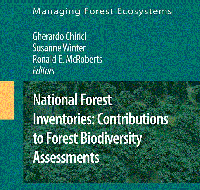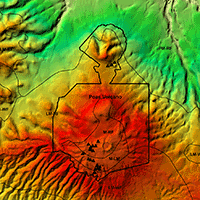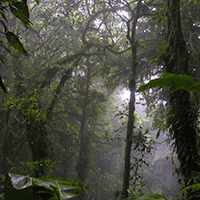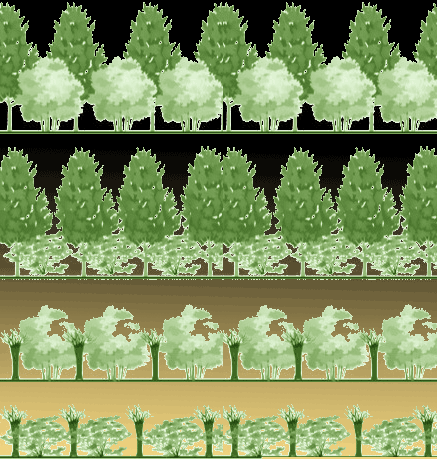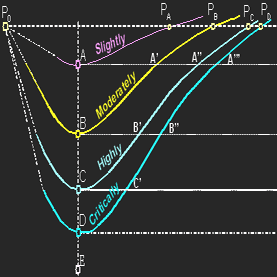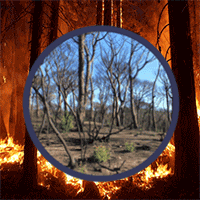
Investigating the effect of selective logging on tree biodiversity and structure of the tropical forests of Papua New Guinea
Riccardo Testolin (1) , Simon Saulei (2), Alessio Farcomeni (3), Giorgio Grussu (1-4), Cossey Yosi (2), Michele De Sanctis (4), Fabio Attorre (4)
iForest - Biogeosciences and Forestry, Volume 9, Issue 3, Pages 475-482 (2016)
doi: https://doi.org/10.3832/ifor1732-008
Published: Jan 25, 2016 - Copyright © 2016 SISEF
Research Articles
Abstract
Unsustainable exploitation of tropical forest resources is raising worldwide concern. In Papua New Guinea (PNG) timber harvesting has been identified as a major contributor to deforestation and forest degradation but its impact on biodiversity is still poorly understood. In this study we investigated the effect of selective logging on tree taxonomic composition, structure and diversity of PNG forests. We used data from 101 one-hectare permanent sample plots (PSPs) belonging to two vegetation types: low altitude forests on plains and fans (type P) and low altitude forests on uplands (type H). We used multivariate techniques to test for significant differences in species composition between plots of different vegetation types and disturbance regimes, identifying the tree taxa to which these differences could be ascribed. ANOVA was used to test for differences between logged-over and unlogged forest PSPs with respect to biodiversity (richness, Shannon’s diversity, Pielou’s evenness) and stand structure (stem density, basal area - BA). Temporal trends of forest features were analyzed using linear regression. Significant differences in taxonomic composition were found between logged-over and unlogged plots of the H type (p = 0.04). No differences were found in richness, diversity and evenness between logged-over and unlogged forest plots, while stem density was higher in the latter (421 ± 153 stems ha-1). Greater BA was found in unlogged forests (30.28 ± 4.45 m2 ha-1) of the H type when compared to the logged-over stands (15.52 ± 4.04 m2 ha-1). We detected positive trends in richness (0.55 ± 0.19 taxa ha-1 yr-1) and diversity after logging. Furthermore, H type forest exhibited positive trends in stem density (9 ± 1 stems ha-1 yr-1) and BA (0.42 ± 0.06 m2 ha-1 yr-1) with elapsed time since harvesting. Our analysis highlights some significant effects of logging activities on biodiversity and structure of PNG forests. Additionally, forests exhibited a significant recovery with respect to richness, diversity and stand structure. These preliminary results will be compared with data collected by the forthcoming National Forest Inventory in order to assess and monitor the effects of human activities and ecological factors on PNG forest biodiversity and develop appropriate conservation measures and sustainable management strategies.
Keywords
Selective Logging, Biodiversity, Basal Area, Papua New Guinea, Multivariate Analysis, National Forest Inventory, Permanent Sample Plots, REDD+
Authors’ Info
Authors’ address
Giorgio Grussu
Food and Agriculture Organization of the United Nations, v.le delle Terme di Caracalla, I-00153, Roma (Italy)
Cossey Yosi
Papua New Guinea Forest Research Institute, P.O. Box 314, Lae 411, Morobe Province, Papua (New Guinea)
Department of Public Health and Infectious Diseases, “Sapienza” University of Rome, p.le Aldo Moro 5, I-00185 Roma (Italy)
Michele De Sanctis
Fabio Attorre
Department of Environmental Biology, “Sapienza” University of Rome, p.le Aldo Moro 5, I-00185 Roma (Italy)
Corresponding author
Paper Info
Citation
Testolin R, Saulei S, Farcomeni A, Grussu G, Yosi C, De Sanctis M, Attorre F (2016). Investigating the effect of selective logging on tree biodiversity and structure of the tropical forests of Papua New Guinea. iForest 9: 475-482. - doi: 10.3832/ifor1732-008
Academic Editor
Gianluca Piovesan
Paper history
Received: Jun 05, 2015
Accepted: Nov 01, 2015
First online: Jan 25, 2016
Publication Date: Jun 01, 2016
Publication Time: 2.83 months
Copyright Information
© SISEF - The Italian Society of Silviculture and Forest Ecology 2016
Open Access
This article is distributed under the terms of the Creative Commons Attribution-Non Commercial 4.0 International (https://creativecommons.org/licenses/by-nc/4.0/), which permits unrestricted use, distribution, and reproduction in any medium, provided you give appropriate credit to the original author(s) and the source, provide a link to the Creative Commons license, and indicate if changes were made.
Web Metrics
Breakdown by View Type
Article Usage
Total Article Views: 56442
(from publication date up to now)
Breakdown by View Type
HTML Page Views: 44671
Abstract Page Views: 5822
PDF Downloads: 4547
Citation/Reference Downloads: 31
XML Downloads: 1371
Web Metrics
Days since publication: 3619
Overall contacts: 56442
Avg. contacts per week: 109.17
Citation Metrics
Article Citations
Article citations are based on data periodically collected from the Clarivate Web of Science web site
(last update: Mar 2025)
Total number of cites (since 2016): 5
Average cites per year: 0.50
Publication Metrics
by Dimensions ©
Articles citing this article
List of the papers citing this article based on CrossRef Cited-by.
References
Effect of logging on forest structure at the Mongi-Busiga forest research plots: Finschafen, Papua New Guinea. In: Proceedings of the “PNGFRI-JICA international forestry seminar”. Lae (Papua New Guinea) 4-7 October 1999. PNGFRI, Lae, Papua New Guinea, pp. 157.
Gscholar
PINFORM: A growth model for lowland tropical forest in Papua new Guinea. ITTO Project PD162-91/PNGFRI, PNG Forest Research Institute, Lae, Papua New Guinea, pp. 49.
Gscholar
Permanent sample plot techniques for mixed tropical forest. Oxford Forestry Institute, University of Oxford, Oxford, UK, pp. 124.
Gscholar
Data, programs and models for natural forest growth and yield. ITTO Project PD 162/91-PNGFRI, Lae, Papua New Guinea, pp. 37.
Gscholar
The Barnett report. A summary of the report of the commission of inquiry into aspects of the timber industry in Papua New Guinea. The Asian Pacific Action Group, Hobart, Australia, pp. 59.
Gscholar
Quantifying the biodiversity value of tropical primary, secondary, and plantation forests. Proceedings of the National Academy of Science USA 104: 18555-18560.
CrossRef | Gscholar
Papua New Guinea inventory of natural resources, population distribution and land use handbook (2nd edn). Australian Agency for International Development, Camberra, Australia, pp. 149.
Gscholar
Country environmental profile: Papua New Guinea - Final Report. Framework Contract AMS/’ 451 Lot No. 6. Request for Services N°2005/’ 102581. European Commission and Government of Papua New Guinea, Port Moresby, Papua New Guinea, pp. 72.
Gscholar
The last frontier forests: ecosystems and economies on the edge. World Resource Institute. Washington DC, USA, pp. 54.
Gscholar
Regeneration and growth of the moist tropical forest in Papua New Guinea and the implications for future harvest. Commonwealth Scientific and industrial Research Organization, Division of Wildlife and Ecology, Canberra, Australia, pp. 15.
Gscholar
PRIMER v6: user manual/tutorial. PRIMER-E, Plymouth, UK, pp. 190.
Gscholar
Change in marine communities: an approach to statistical analysis and interpretation (2nd edn). PRIMER-E Ltd, Plymouth, UK, pp. 176.
Gscholar
Centres of plant diversity: vol 2. Asia, Australia and the Pacific. WWF/IUCN, Gland, Switzerland, pp. 592.
Gscholar
The utilization of Papua New Guinea Timbers. Department of Primary Industry, Office of Forests, Forest Products Research Centre, Port Moresby, Papua New Guinea, pp. 28.
Gscholar
The effects of logging on the regeneration and nutrient budget of Araucaria cunninghamii dominated tropical rainforest in Papua New Guinea. The Malaysian Forester 41: 303-318.
Gscholar
Final report. Assessment, management and marketing of goods and services from cutover native forests in Papua New Guinea. ACIAR, Canberra, Australia, pp. 44.
Gscholar
Forest carbon and REDD+ in Papua New Guinea. In: “Native forest management in Papua New Guinea: advances in assessment, modelling and decision-making” (Fox JC, Keenan RJ, Brack CL and Saulei S eds). ACIAR Proceedings 135: 32-40.
Gscholar
Forest resources and vegetation mapping of Papua New Guinea. CSIRO, Canberra, Australia, pp. 249.
Gscholar
Cheap but not easy: the reduction of greenhouse gases emissions from deforestation and forest degradation in Papua New Guinea. Pacific Economic Bulletin 25: 130-143.
Gscholar
Native forest management in Papua New Guinea: an introduction. In: “Native forest management in Papua New Guinea: advances in assessment, modelling and decision-making” (Fox JC, Keenan RJ, Brack CL and Saulei S eds). ACIAR Proceedings 135: 32-40.
Gscholar
Improved timber inventory and strategic forest planning in Papua New Guinea. Bureau of Rural Sciences, Canberra, Australia and PNG Forest Research Institute, Lae, Papua New Guinea, pp. 12.
Gscholar
Papua New Guinea 4th National Report to the CBD. Port Moresby, Papua New Guinea, pp. 86.
Gscholar
A report on diagnostic sampling conducted in Oomsis forest. FAO DP/ PNG/84/003, Working Document No. 9. Lae, Morobe Province, Papua New Guinea, pp. 23.
Gscholar
Report on the establishment of PSP/TSI in Turama, Papua New Guinea. PNG Forest Research Institute Internal Report, Lae, Papua New Guinea, pp. 25.
Gscholar
Forestry Act 1991. No 30, Hohola, Independent State of Papua New Guinea, 21 April 1993.
Gscholar
Assessing the relationship between the soil groups and species composition in logged-over rainforests of Papua New Guinea. MSc Thesis, School of Agricultural and Forest Sciences, University of Wales, Bangor, UK, pp. 96.
Gscholar
Natural regeneration following clear-fell logging operations in the Gogol Valley, Papua New Guinea. Ambio 13: 351-354.
Gscholar
The state of the forests of Papua New Guinea. Mapping the extent and condition of forest cover and measuring the drivers of forest change in the period 1972-2002. University of Papua New Guinea, Port Moresby, Papua New Guinea, pp. 148.
Gscholar
The Irian Jaya priority-setting workshop. Final report, Conservation International, Washington, DC, USA, pp. 71.
Gscholar


